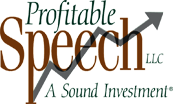[Image by Pexels of Pixabay]
Most public speakers use slides…but are they necessary and if so are they used correctly?
Here are five common slide mistakes to avoid:
- Assuming you need slides in your presentation. This is an important distinction to make. I’ve both used and not used slides. I make that decision based on whether or not my slides will enhance or clarify my points for the audience to whom I’m speaking.
- Excessive slides. Not only should you use discretion when determining if slides are needed but quantity counts. Every item of your presentation doesn’t warrant a new slide. Similarly when a speaker opens his or her mouth to speak, it doesn’t always require it be made into a slide.
- Reading your slides. Opting to use slides is fine as long as the speaker doesn’t read them. Instead talk about the content because reading them may be viewed as insulting to your participants.
- Creating distractions. As a speech coach, I’ve seen quite a few distracting slides because they had too much information, used too many colors, were unclear what the takeaway was, used pictures unnecessarily, used inconsistent fonts, or used outdated animations. This list is not meant to be exhaustive but gives you a good starting point with your next presentation.
- Not using call outs. Call outs are a very effective way of letting the listener know what to pay attention to. You can use call outs with symbols (e.g., arrows, bullets), boldface, or something that distinguishes your point.
Slides are designed to support the speaker and enhance the message being conveyed. Creating slides requires effort and time. Always remember that your audience has not been looking at your visuals and may not understand them as you intended. Therefore, it’s wise to fully proofread your slides and ask a trusted resource to review them and provide feedback.
If you’d like to discuss this or if I may assist you, please let me know. I’m happy to help you or your team and may be reached by email ([email protected]) phone (518-664-6004) in-person or virtually.


